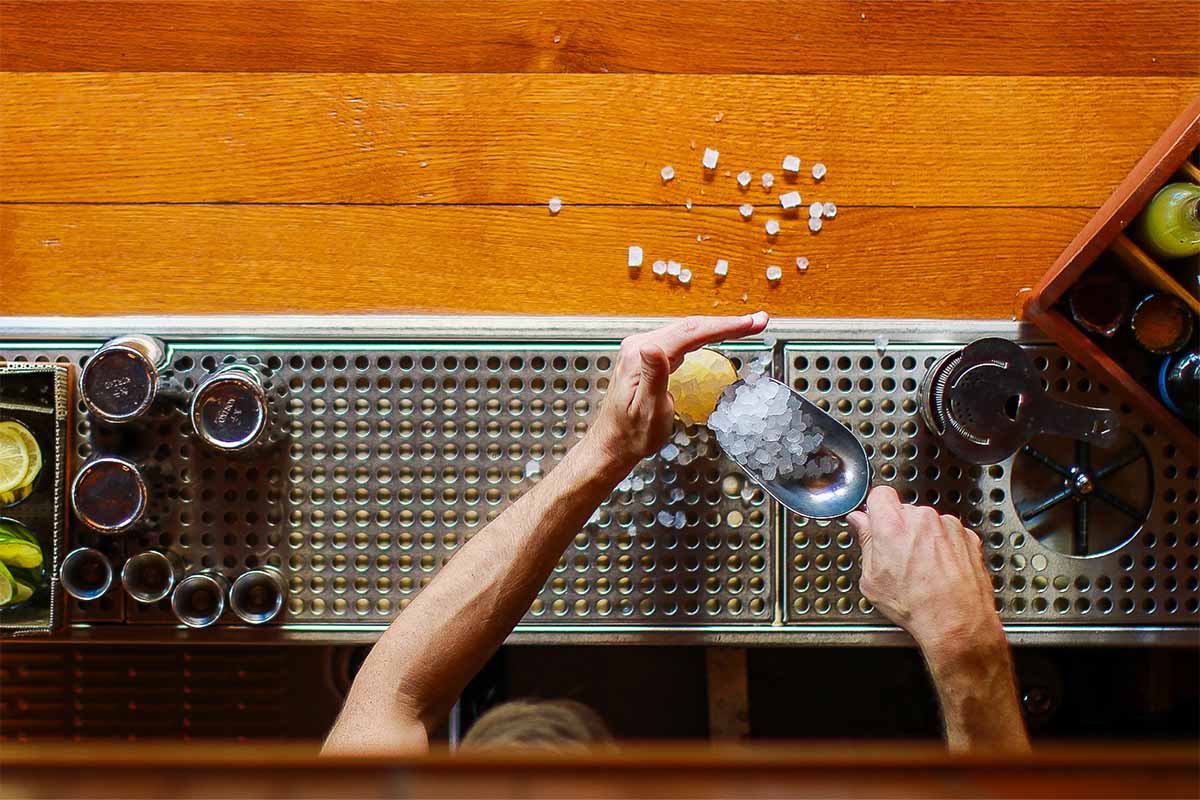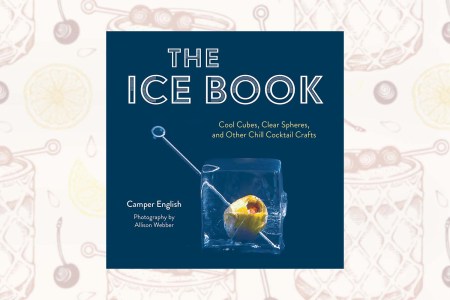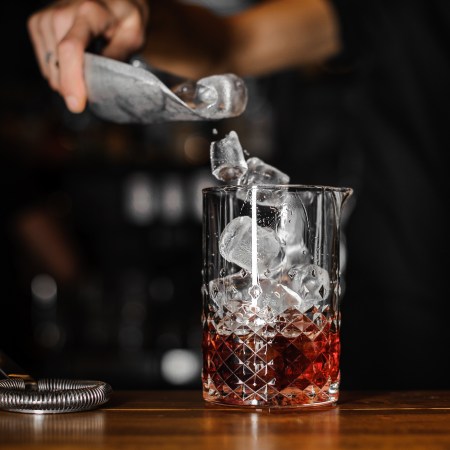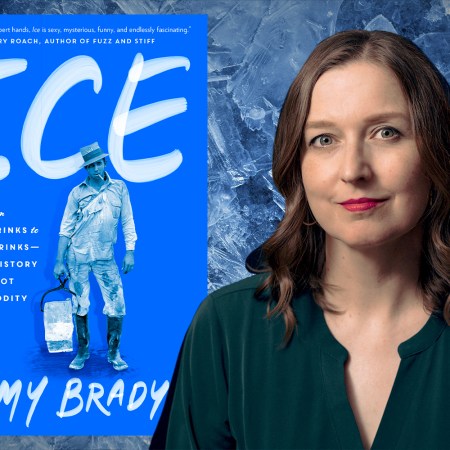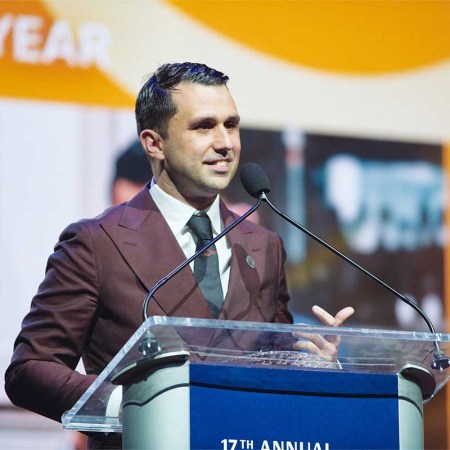Almost every single bartender has heard the dreaded phrases “light ice” or “less ice” when building your drink, or even the holy shit phrase of “no ice.” While the internet is a funny place of (mis)information, there’s definitely been a lot of nonsensical talk and viral TikToks about ice and glass servings as of late. I’m penning this to help set the record straight, with some help from seasoned bar veterans and a social media influencer (on the right side of things), about why we use specific ice amounts and glassware — and to reassure you we’re not trying to rip you off.
While I can’t speak for every bartender program, I can speak for the majority of us well-trained bar professionals when I say a lot of time and thought goes into creating the perfect cocktail. The R&D creative phase of cocktail development when we decide on the best glassware and ice to use isn’t intended to try to steal your hard-earned money. It’s intended to create and serve the drink, in the ideal vessel, while keeping your libation at an optimum temperature throughout your experience.
This Is the Ultimate Guide to Clear Ice
“The Ice Book” makes transparency easy for home bartendersNow, Cocktail Science 101: less ice actually dilutes your drink faster, and within minutes, you have a glass with no ice (because it melted). I’m sure you’ve made a drink at home or during your days of college at some point, and this has happened to you.
Now, a little dilution is key. Rima Kourlinadtchik, the current GM of Weiss Distillery & Speakeasy (where they have their own ice program), explains why ice is paramount. “Dilution is so important,” she says. “Depending on what you’re drinking, it just opens everything up to be able to taste the drink better. Mellows things out. Cuts down tartness/sweetness.”
On the rare occasion, a patron may question the quantity of booze in their cocktail. “If a drink has a richer flavor than the guest was expecting, they may mention that they can’t taste the spirit itself,” Kourlinadtchik adds. “Sometimes it’s snarky, sometimes it’s positive.’’
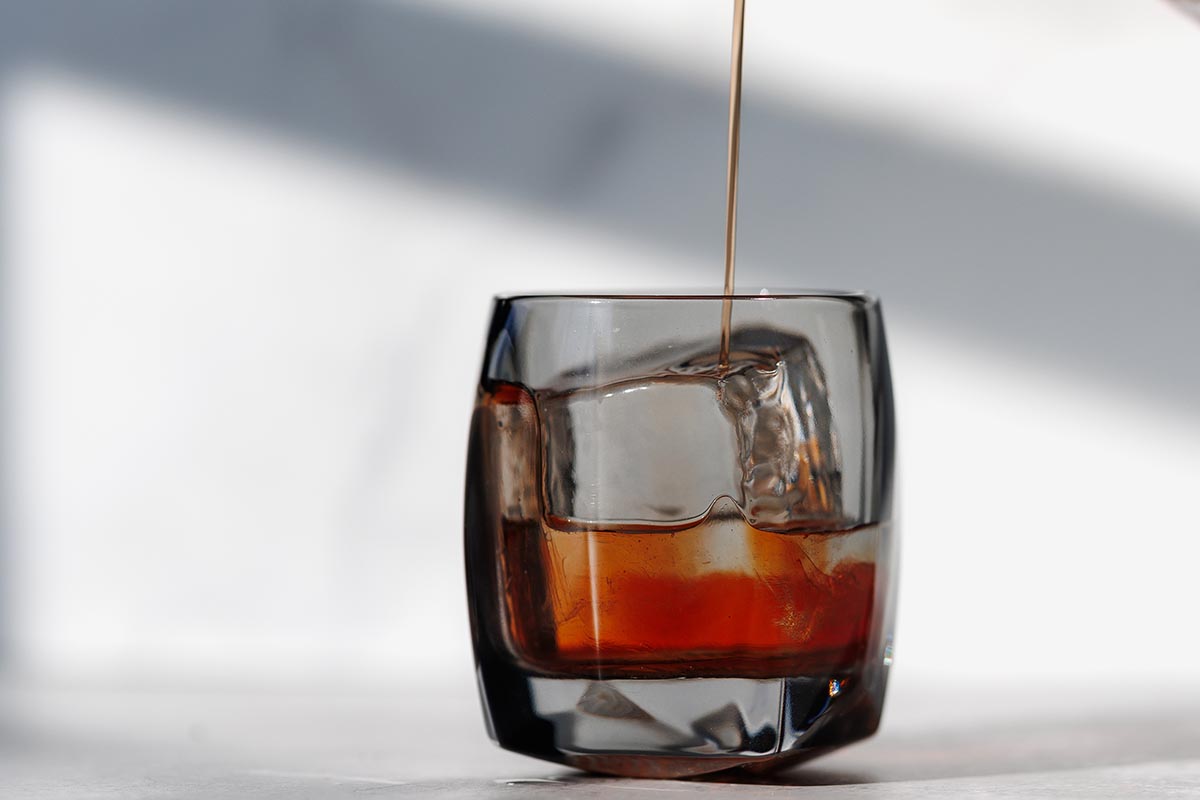
Shaken and stirred cocktails generally have a set ratio for alcohol, or what we in the business call a “cocktail spec.” Example: Manhattan, 3 ounces; Paloma, 2 ounces; Old Fashioned, 2 ounces. So, while your Martini glass and coupe glass may seem rather large, there is a rhyme to the reason. Generally speaking, we want what we call a wash-line: the level of the drink below the top of the glass (this will generally vary with shaken or stirred cocktails). The liquid is never intended to reach the very tip-top of the glass or be literally overflowing. You should be able to enjoy the cocktail without spilling it on the table or yourself or attempting the infamous “no hands sip.”
“I would say 60% of the people understand how the ice in their cocktail doesn’t change the volume of their cocktail ingredients prior to stirring or shaking the cocktail with ice,” says Justin Sajda, the creative behind Thirsty Whale. “The other 40% still feel they are being cheated and refuse to listen to logic. Most people may not understand that ice is arguably the most important ingredient in their cocktail. The craft cocktail scene is quality over quantity, and no matter what you tell some folks, they just want quantity to make them feel they’re getting a deal.”
While I’m sure there are some valid examples of bartenders not pouring the proper amount of alcohol, the sliding scale for this is way in favor of you getting what you paid for. And you can figure this out! If a bartender is free pouring from a pour spout, a real count of four equals 1 ounce of booze — so generally speaking, a shaken cocktail has 2 ounces and a stirred cocktails has 3 ounces, though there are exceptions for some tiki drinks. Even after 24 years in hospitality, I’ll count every time I see someone free pouring. (And yes, the well-seasoned dive bar or novice bartender may sometimes over-pour and, unfortunately, under-pour.)
“I think this is one annoying thing about social media: people who think they are finding some way to say we are cheating them,” says Brynn Smith, bar director of West Hollywood’s Bar Next Door. “I explain we work within pour costs and that most cocktails are anywhere from 2 to 3 ounces of liquor and to order stronger ones if they want more booze. And ice matters with the look and the integrity of each cocktail. At Bar Next Door, we have four different styles of ice to achieve the aesthetic and look of our beautiful craft cocktails. Having non-cocktail ice can make your drinks not come out properly diluted, and they look cheaper.”
My simple advice: become friends with your bartenders. We’re lovely people and generally love discussing all things cocktails, including ice and pour amounts. And if you want a heavy-handed pour, maybe it’s on you to kindly pony up for it.
Karl Steuck has 20+ years of experience in hospitality, most of those behind the bar, and 5+ years as a business director for a craft spirit brand. He’s also spent the last 5 years running his own consulting and content firm, Spirit & Spoon.
Every Thursday, our resident experts see to it that you’re up to date on the latest from the world of drinks. Trend reports, bottle reviews, cocktail recipes and more. Sign up for THE SPILL now.
